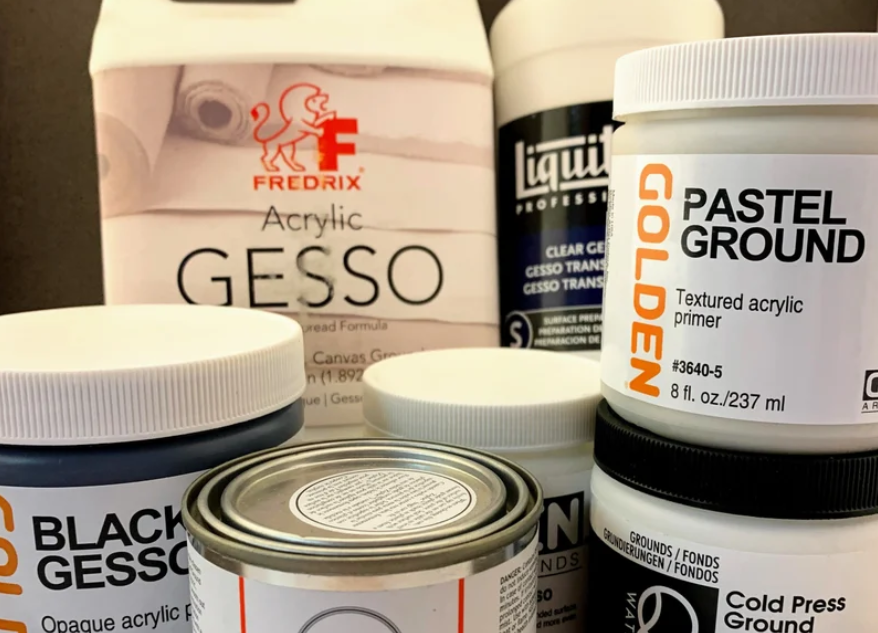Gesso is a versatile art supply that has become an essential part of preparing surfaces for painting.
Gesso is an acrylic-based paint primer used to prepare surfaces for painting. It provides a slightly textured, absorbent surface for acrylic and oil painters, ensuring paint adherence and improving artwork longevity.
Explore our curated selection of contemporary artists from around the globe.
Naturalist Gallery offers artist representation internationally. Apply your art.
Whether you are an acrylic painter or an oil painter, understanding the ins and outs of gesso can enhance your painting experience and improve the longevity of your artwork. In this comprehensive guide, we will delve into what gesso is, its different types, how to use it on various surfaces, and its significance for acrylic and oil painters.
Gesso is a paint primer used to prepare surfaces for painting. Traditionally, it was made for oil painting and contained animal glue binder, chalk, and white pigment. However, modern-day gesso, commonly known as acrylic gesso, is formulated with an acrylic polymer medium, titanium dioxide (white pigment), calcium carbonate (chalk), and other chemicals to ensure flexibility and archival stability.
Today, gesso is available in various types, including white, black, clear, and colored gesso. Additionally, there are two main grades of gesso: Artist grade and Student grade. Artist grade contains more pigment, making it thicker and more opaque, while Student grade has more filler and is cheaper. The consistency and texture of gesso may vary among brands, so experimentation is key to finding the best fit for your artistic style.
- Gesso for Acrylic and Oil Painters
For Acrylic Painters: Acrylic gesso is not necessary for pre-primed canvases, but it provides a slightly more absorbent surface, making it ideal for raw canvas or boards. Experiment with different layers of gesso to achieve the desired texture and tooth for your painting style.
For Oil Painters: Oil painters must use some form of primer to protect the canvas from the corrosive nature of oil paint. Acrylic gesso can serve as a suitable barrier for oil paints, providing a stable ground for your artwork.
For Canvas: Priming a canvas with gesso is easy and can be done with a wide, flat brush. Thin gesso with water if necessary, and apply it evenly across the canvas in multiple layers for a smoother finish. Sand the surface between each layer for optimal results.
For Panels: Gessoing a panel is similar to canvas, but using a foam roller can yield smoother results. Lightly sand the panel to enhance the surface's tooth before applying gesso.
Some common issues during gesso application include brush hairs, lumps, or gummy texture. Use a quality brush, work quickly, and thin gesso with water if needed to avoid these problems.
- Conclusion
Gesso, in its acrylic form, provides a versatile and easy-to-use ground for both acrylic and oil painters. Its ability to create an absorbent and toothy surface makes it a valuable tool for artists looking to improve their painting techniques. Whether you're a beginner or an experienced painter, understanding how to apply gesso and its significance can enhance your artistic journey. So, explore the world of gesso, experiment with different surfaces and textures, and let your creativity flourish on your well-prepared canvas!
View limited edition prints by contemporary artists at Naturalist Gallery.
You may also find the following articles helpful:
En Plein Air Painting: Art Made on Site
Mastering Watercolor: 10 Essential Tips for Beginners
Oil Painting Tips for Beginners: Mastering the Practice
What is Tone in Art: Understanding Color Value
Comparing All Paint Mediums: A Comprehensive Guide
Mastering Acrylic Painting: 21 Tips for Beginners






